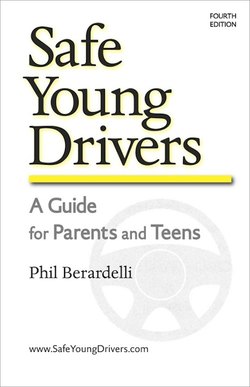Читать книгу Safe Young Drivers: A Guide for Parents and Teens - Phil Berardelli - Страница 10
Before You Move the Vehicle
ОглавлениеTeens typically are so anxious to begin driving that they don’t want to learn much about the contraption they will be using in their newfound freedom. Girls especially are averse to learning the details. As the father of two daughters, I can say this with authority, but it’s important to know the basics about an automobile or whatever vehicle will be driven. So, before the lessons begin, make sure your teen spends some time studying the machine.
No need for an extensive course; for one thing, few of us possess such knowledge these days. Modern vehicles are highly complex machines. All new ones carry much more onboard computer power than the Apollo spacecraft of the early ‘70s. Not much do-it-yourself maintenance is advisable anymore. Still, it’s useful to give youngsters an understanding of what’s under the hood, what does what, and which components require periodic checking. This all may seem obvious to you, but to most teens, everything is strange and new. So an introduction is in order.
In most models, the owner-maintenance components are clearly marked: the oil dipstick, transmission fluid dipstick, brake and power steering reservoirs, radiator expansion tank and windshield-washer fluid tank. Drive belts also are important, and when broken they can be a source of serious trouble. Take some time to go over the function of each of these components. If you need help, use your owner’s manual.
Inspect the tires and, if you know how, demonstrate how to check the tire pressure (best done when the tires are cold).
With the hood still open, start the engine. Show the power plant at work to give a sense of the energy at the driver’s command. Then turn the engine off and let the youngster sit in the driver’s seat. Go over all of the vehicle’s controls, from the gas and brake pedals (and clutch, if applicable) to the gearshift, lights, turn signals, wiper controls, ignition switch, heating and air conditioning controls, and so on. Again, if you need help, use the manual.
Also discuss the instruments. Pay particular attention to the three critical gauges (or warning lights). A warning from each requires a different response. The important ones monitor temperature, oil level and battery power (“Boil, Oil, Coil”). We’ll discuss these items later; for now, just point them out.
You also should discuss the fuel gauge. Most fuel gauges don’t give true readings. When the tank is full, the needle moves above the “F” mark. When the needle indicates halfway, the tank usually is only one-third full, and when most gauges read “empty,” they are not quite empty—though it’s still advisable to refuel well before the gauge hits that point. Also, sometime early during the lessons, stop at a service station and demonstrate how to fuel up.
Don’t forget to open the glove compartment and show the vehicle registration card and owner’s manual. The teen should spend some time reading and studying the manual. It contains lots of useful information, and this is a good time to begin learning about vehicle maintenance and care.
Last, let your teen turn the key and start the engine.
Today’s vehicles have many different starting procedures, so you will have to fill in the specifics. Most modern ignition systems are electronic, so there’s no need to depress the gas pedal while starting; just turn the key all the way to the start position, wait until the engine catches, and release. Older models might need some help from the gas pedal.
The same goes for shutting the engine off. Sometimes you need to depress a on the steering column before you can remove the key.
The main thing to teach is that, as soon as the engine starts and the key is released, the key should never be turned to the starting position again. If you’ve ever done this, you know why. The noise is awful, because the gear teeth on the starter motor are jamming into the gear teeth on the engine crankshaft.
You might even want to let your teen try a double start one time, just for the experience. It’s usually enough to persuade anyone not to do it again, but maybe not. In any event, practice the engine start several times, until the act becomes comfortable.
Be sure your teen understands where the gearshift position should be when the engine is started (“Park” on an automatic, and either neutral or first gear, with the clutch depressed, on a manual transmission). Make sure the parking brake is engaged before starting up.
